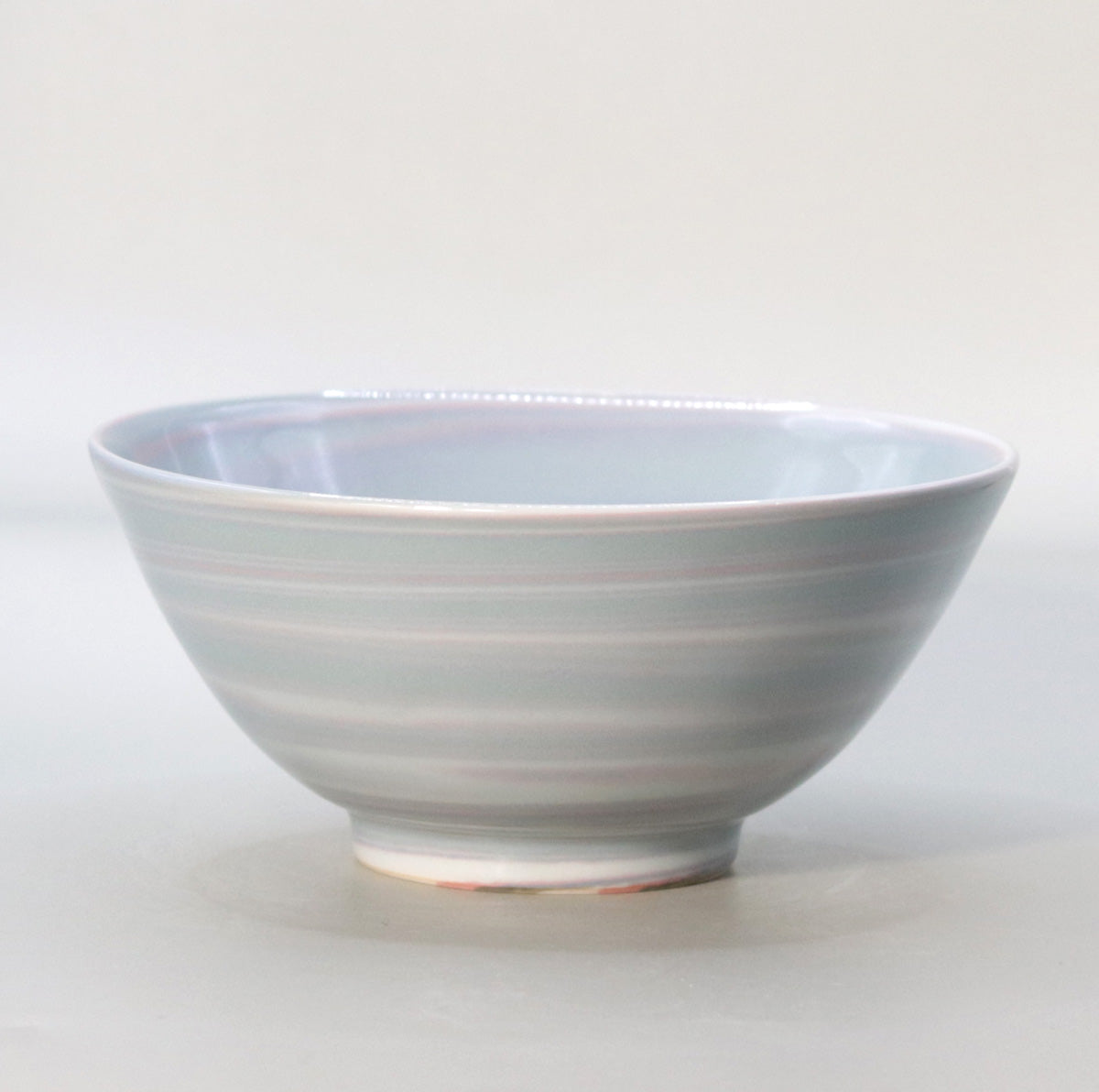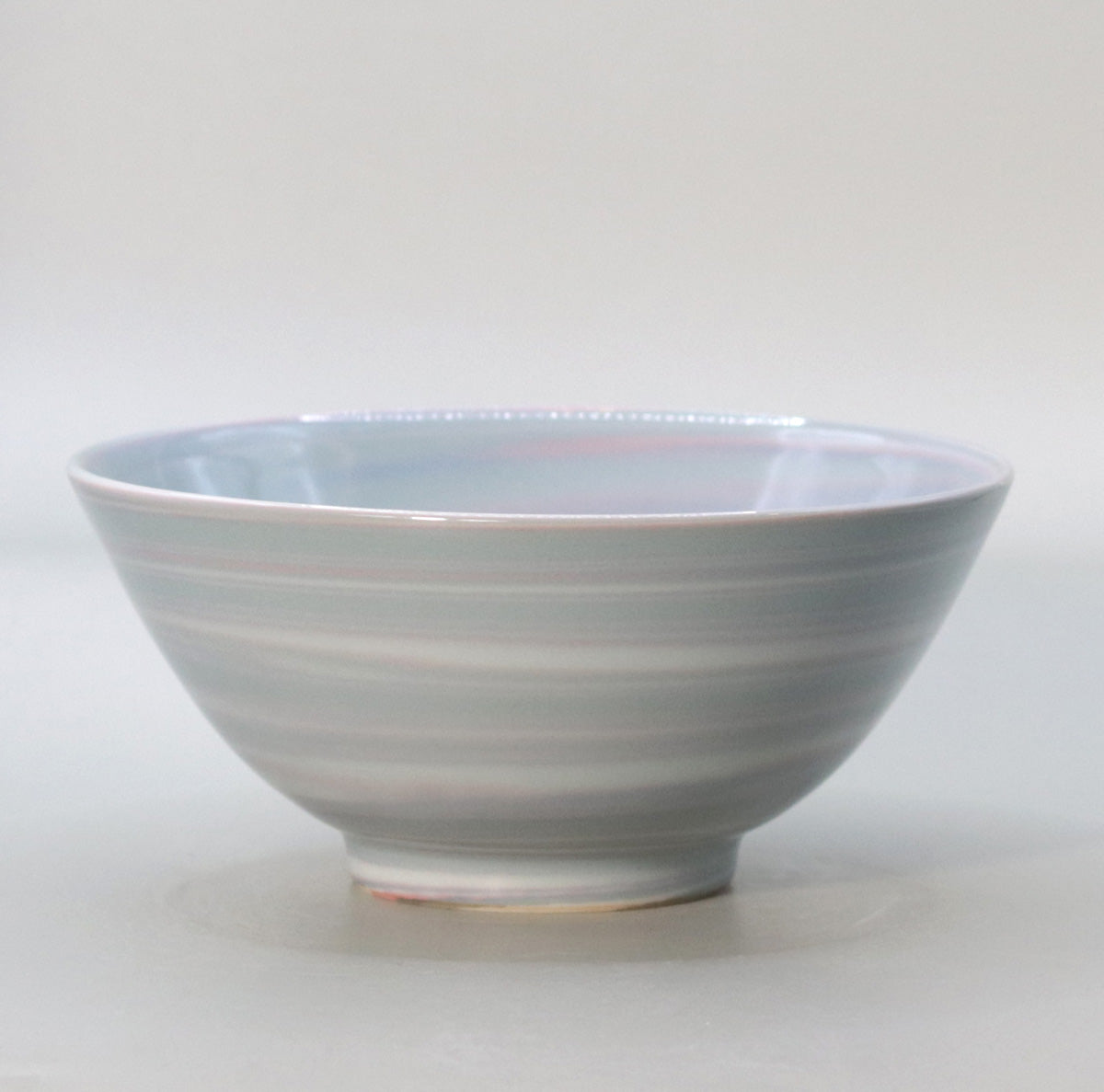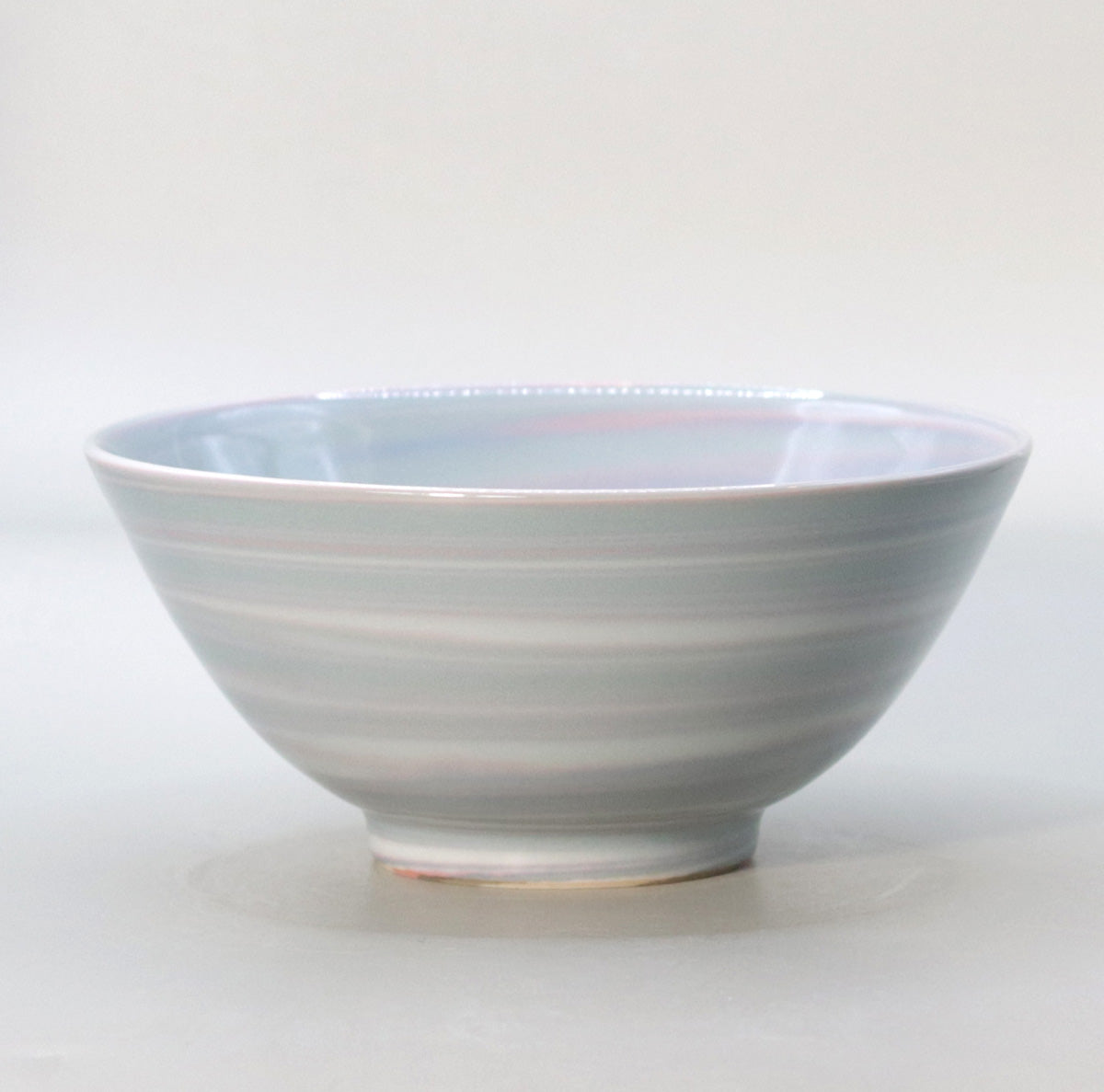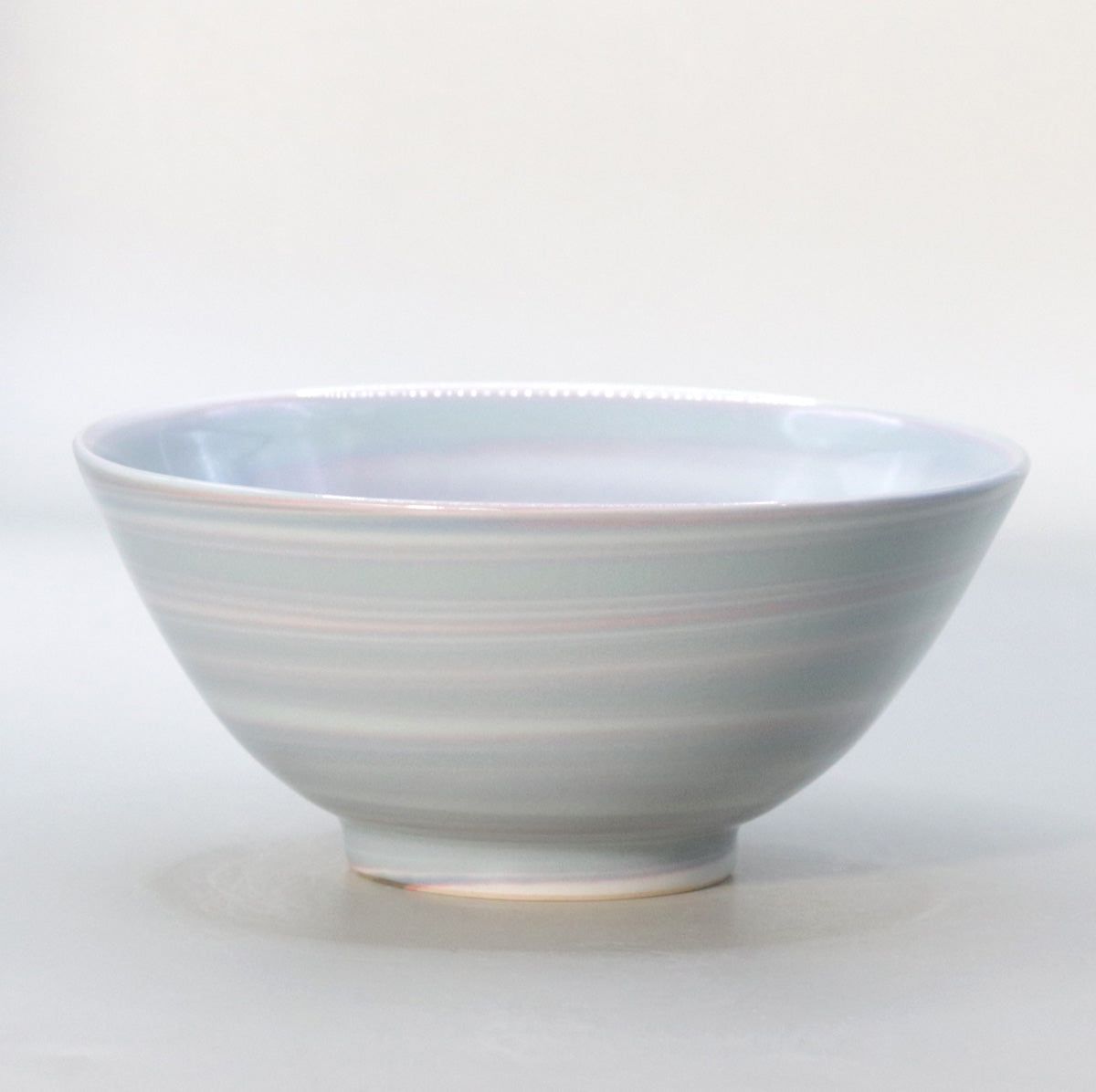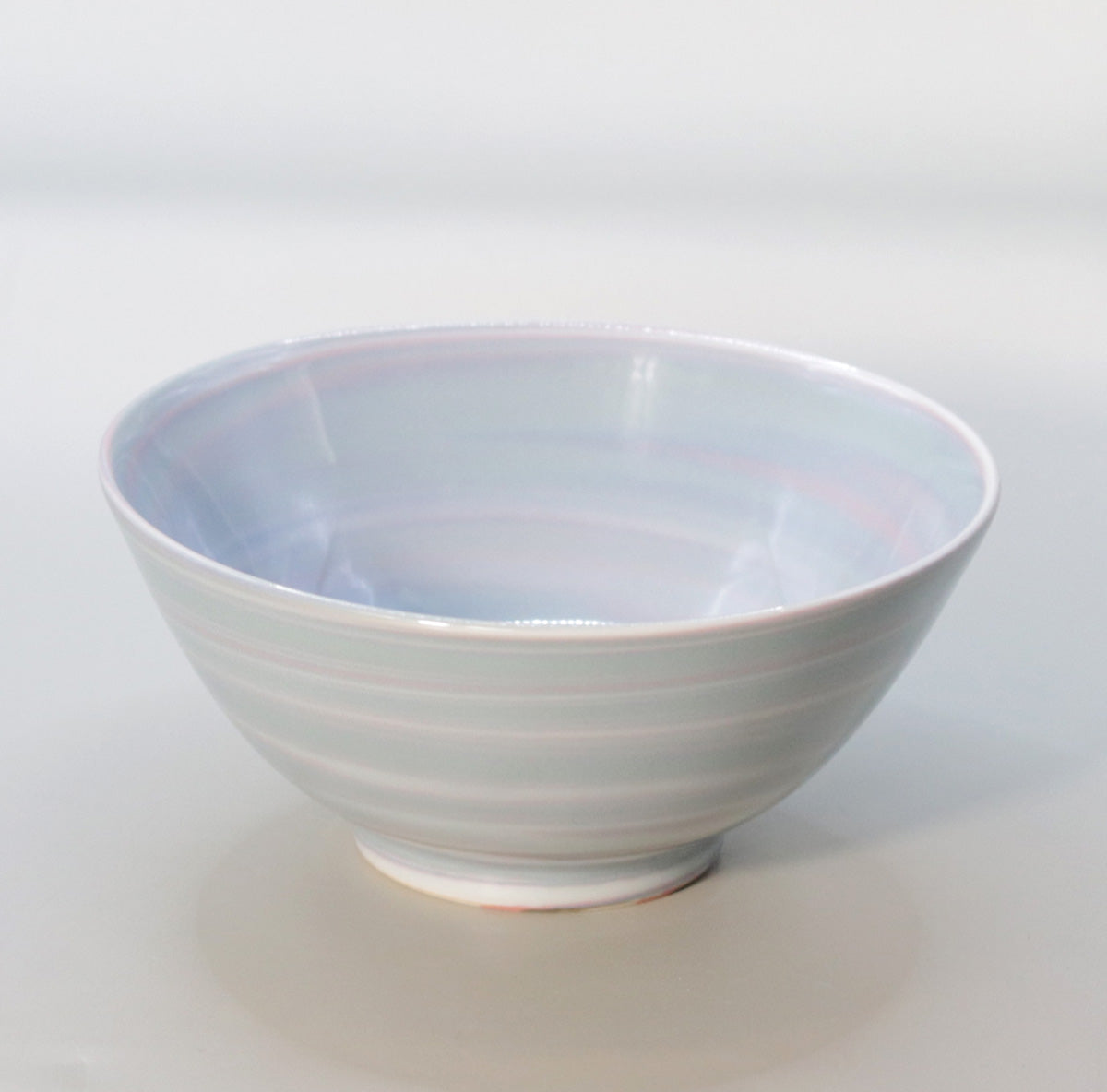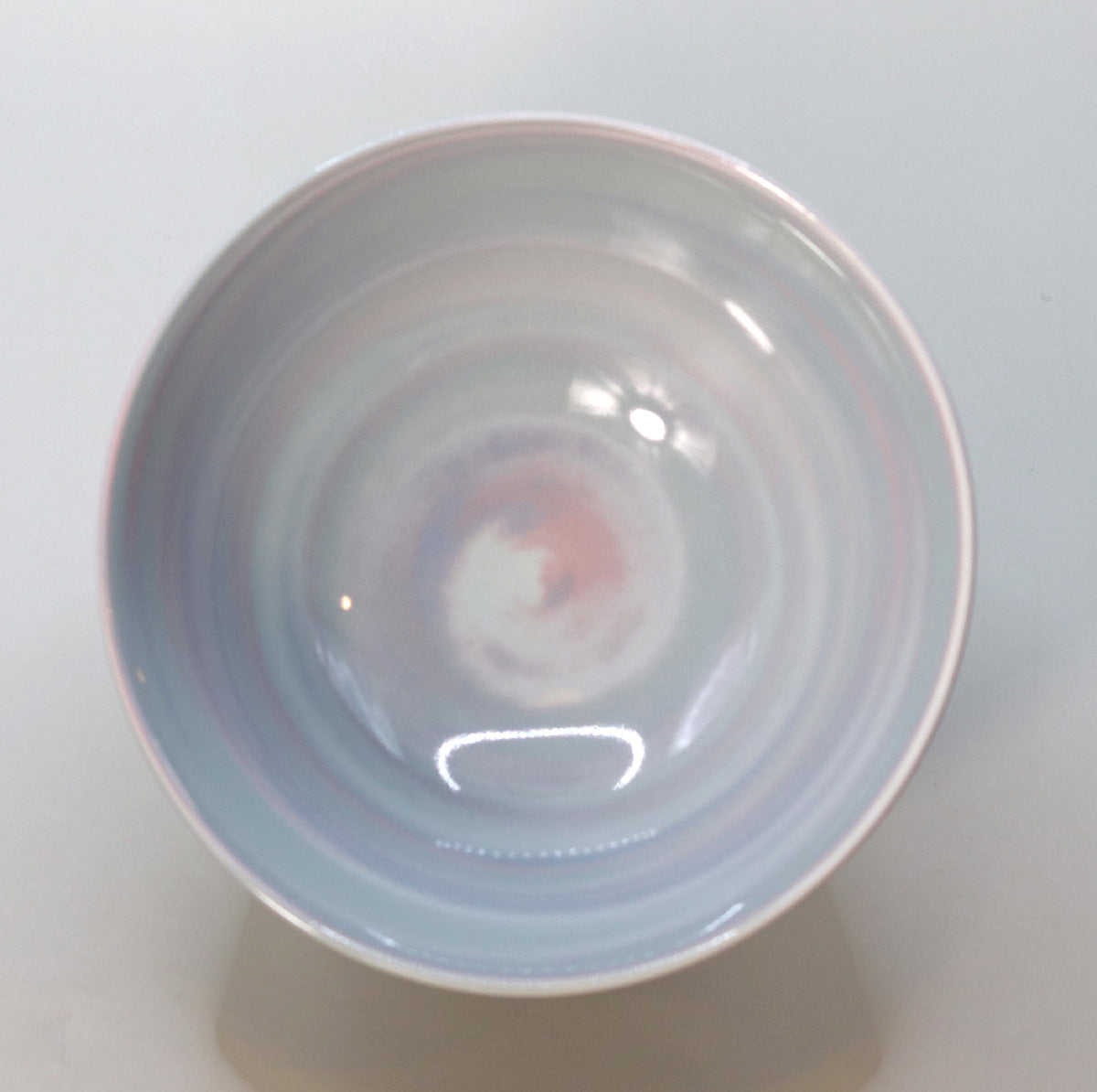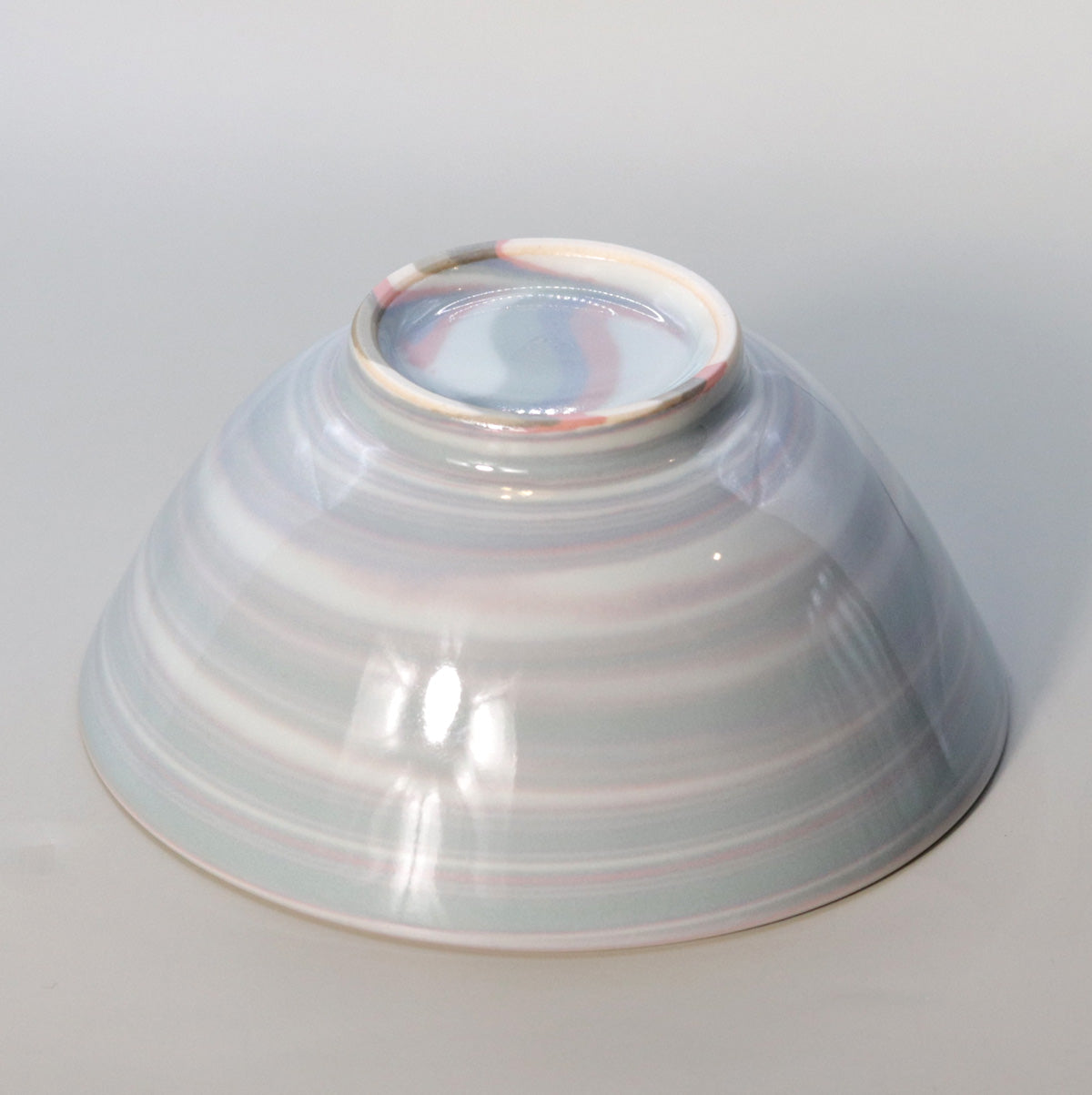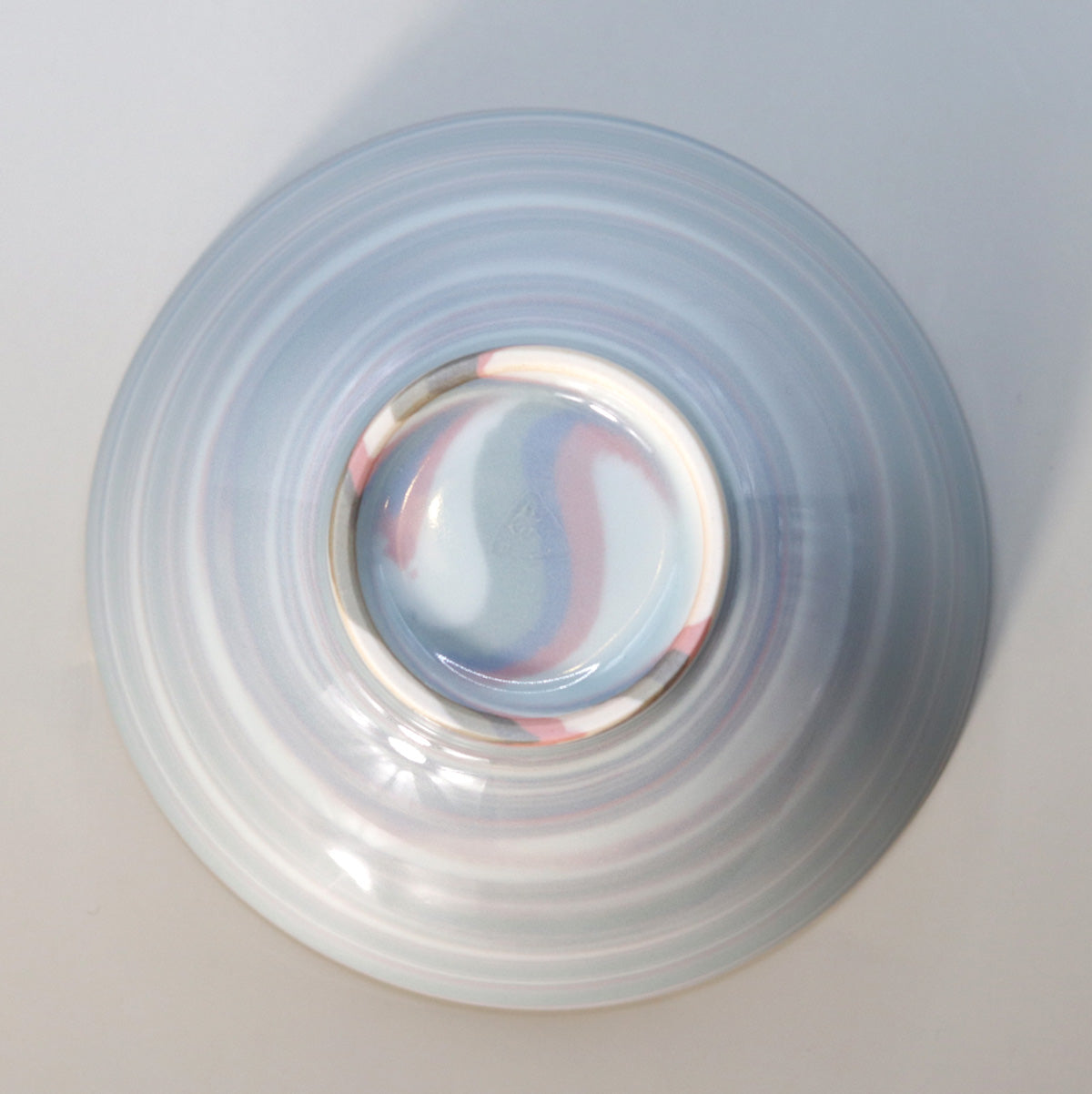Nerikomi blue star birth tea bowl Suwa Sozan
Nerikomi blue star birth tea bowl Suwa Sozan
Couldn't load pickup availability
Width: 13.9cm Height: 6.4cm
I. Work summary
This "Nerikomi Seitan Celadon Tea Bowl" is a matcha bowl created using the "Nerikomi" technique, in which four colors of porcelain clay - white porcelain, celadon, indigo blue porcelain, and red porcelain - are layered and ground on a potter's wheel in one go. The moment a new star is born from a nebula in the distant universe, a pink glow is emitted - the name "Seitan" came from the desire of Suwa Sozan IV to capture that scene in the surface of the bowl. The pale jade-colored celadon layer is the base, and the deep indigo and sparkling red intertwine in a spiral, reflecting the majestic drama of the universe in a gentle form that does not feel artificial.
II. Shape and form
Modestly curved rim
The rim is slightly curved outward, so it does not interfere with the use of the tea whisk and is soft on the lips. The pale pink line running along the rim is reminiscent of the sky at dawn and gives rhythm to the circumference of the vessel.
Shallow spreading prospects
The inside of the cup is shallow, with a kneaded pattern that gently converges towards the bottom. When the matcha is poured in, the green liquid surface shines like a nova born at the center of a nebula, forming a visual focus.
Lightweight Heights
The base is cut low and flares out slightly to the outside. It feels stable when held in the palm of your hand, and is both light in appearance and practical. The crimson layer is intentionally exposed at the base, suggesting the glow of the stars.
III. Kneading technique and glaze tone - Depth of layers that embrace nebulae
Layered structure of four-colored porcelain clay <br data-start="709" data-end="712">White porcelain, celadon, blue porcelain, and red porcelain are rolled out in that order into plates, stacked in a thousand layers, rolled into a cylinder, and then formed into a core of clay before being shaped on a potter's wheel. As the layers rotate, they form a spiral, and stripes reminiscent of the whirlpools of the galaxy appear spontaneously. No two tea bowls have the same appearance.
A veil of transparent celadon glaze <br data-start="840" data-end="843">After shaping, a highly transparent celadon glaze is applied over the entire surface and then reduced firing is performed. The glaze layer acts as a glassy membrane that envelops the internal layered pattern and catches the light, creating depth and a soft blur. The indigo layer suggests the stillness of the deep sea, the crimson layer suggests the heat of the birth of a star, and the celadon layer gives the whole piece clarity.
The feel of the glaze surface <br data-start="987" data-end="990">The glaze surface is smooth and feels as if it is sticking to your fingertips. While you can visually appreciate the colors of the kneaded ware, the tranquil texture soothes the mind through the palm of your hand.
Ⅳ. Functional beauty and arrangement at tea ceremonies
| season | Recommended main dessert | Synergistic effect with tea bowls |
|---|---|---|
| spring | Sakura mochi and Hanami dango | The crimson layer is reminiscent of a floral haze, softly enhancing the cherry blossom color. |
| summer | Kuzu Manju/Omekan | The cool feeling of the celadon layer dispels the heat of midsummer and creates a clear stream scene. |
| autumn | Tsukimi dango and purple sweet potato yokan | The blue magnetic layer deepens the night sky, while the crimson magnetic layer suggests the moonrise. |
| winter | Camellia Mochi and Yukihira | The white porcelain layers evoke a snowy landscape, while the green of the matcha accentuates the signs of life. |
Harmony with Matcha <br data-start="1374" data-end="1377">The vivid green of the matcha emerges in four colored layers, creating a visual effect as if the "core of the universe" has been born inside the bowl.
Lighting Effects <br data-start="1447" data-end="1450">When lit by warm light from lanterns or candles, the crimson layer glows softly, while the blue layer accentuates the depth of the starry sky. The mysterious scenery is particularly striking at night.
V. Historical background and technical significance
The lineage of Nerikomi
The Nerikomi technique originated with the Nerikomi masters of the Nara period, and developed in Satsuma and Kyo-yaki in the late Edo period. The fourth generation Suwa Sozan has combined the Suwa family tradition, which is based on celadon, with the Nerikomi technique, opening up new possibilities for modern celadon that expresses a cosmic vision.
The story of the birth of stars
The cosmic designs seen in the underglaze red and blue-and-white porcelain of Jingdezhen from the Yuan and Ming dynasties are reinterpreted in a modern way with a layered structure of four-colored porcelain clay. The color of the red porcelain is produced using copper as the main coloring agent, and is stabilized by reduction cooling. Cobalt is used in the blue porcelain layer, and by balancing it with the iron in the celadon layer, a deep color tone is achieved without compromising transparency.
Ⅵ. Artist profile and creative approach
The 4th Suwa Sozan (born in Kyoto in 1970) was trained by the 3rd Suwa Sozan and the 12th Nakamura Sotetsu, a lacquer artist, and took over the name in 2002. With a focus on celadon research, he makes full use of a variety of techniques such as Hotarude, Tobiseiji, and Nerikomi Celadon, and upholds the philosophy that "a piece should have a story and be completed in harmony with the user's heart." This tea bowl is imbued with the desire to hold in the palm of your hand the "brilliance of the moment when a nova is born from a nebula," bringing a deep breath of the universe to the moment of tea ceremony.
VII. Conclusion
The "Nerikomi Seitan Tea Bowl" is a masterpiece that reflects the repeated birth of stars in the distant universe, with a deep indigo ocean and a red nova embraced in a tranquil jade-colored celadon. It embodies dignity and elegance rather than extravagance, and when matcha is poured into it, the green light reflects the stars illuminating the night sky. This work, which is the culmination of the refined sense of form and kneading techniques of the fourth generation Suwa Sozan , brings the quiet universe to the tea ceremony and will bring infinite expanse and warm hope to the hearts of those who see it.
Share
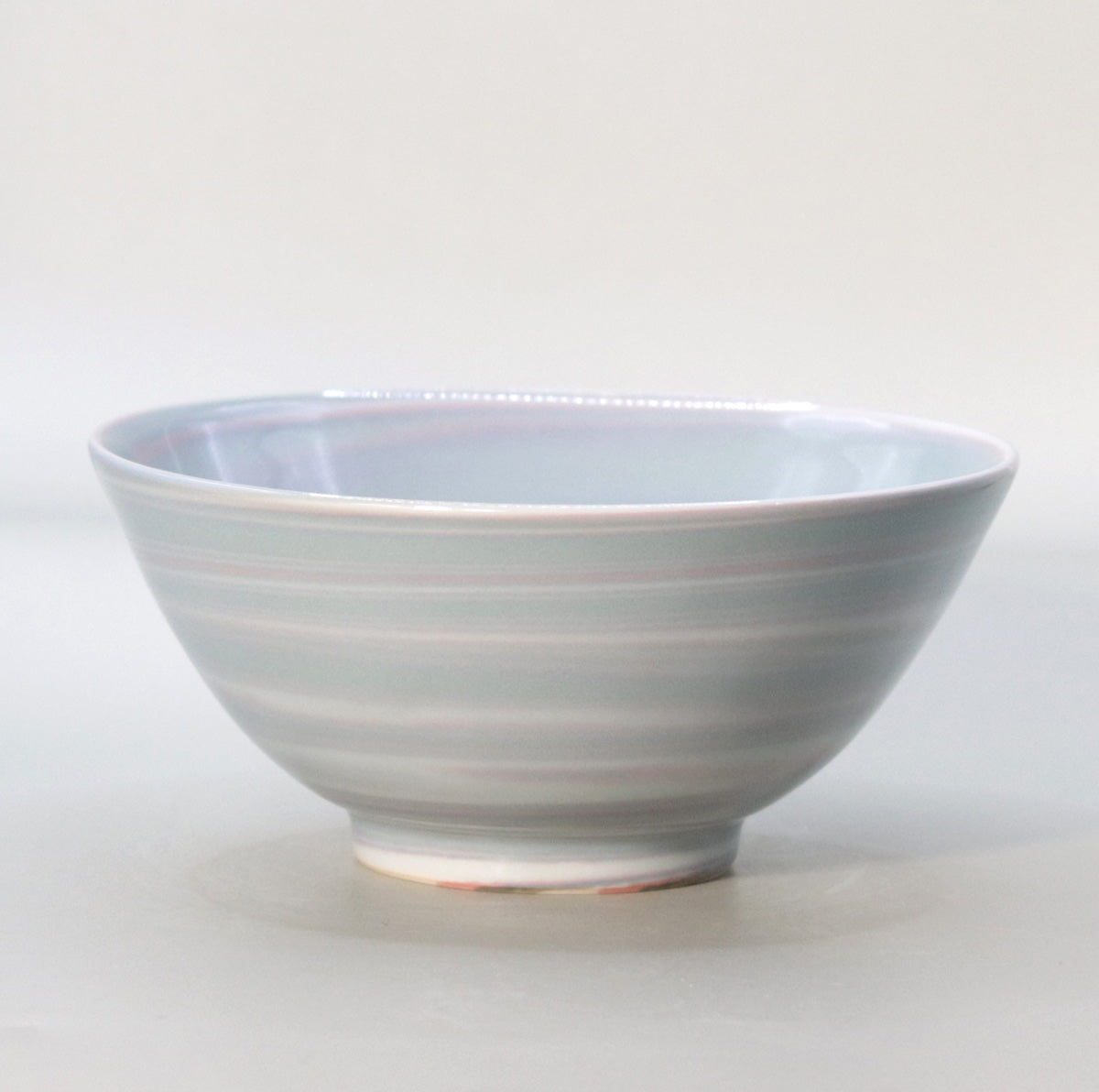
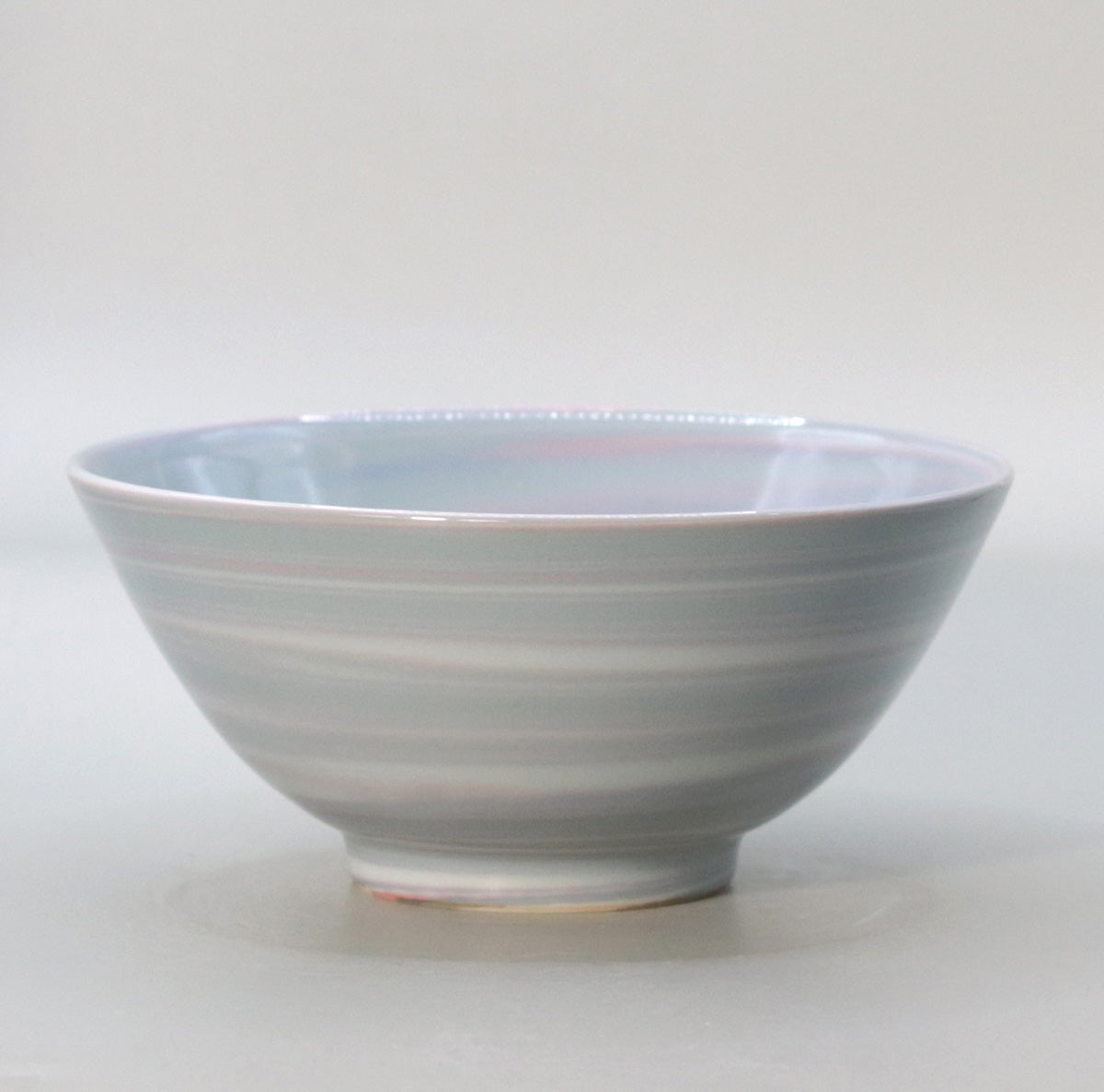



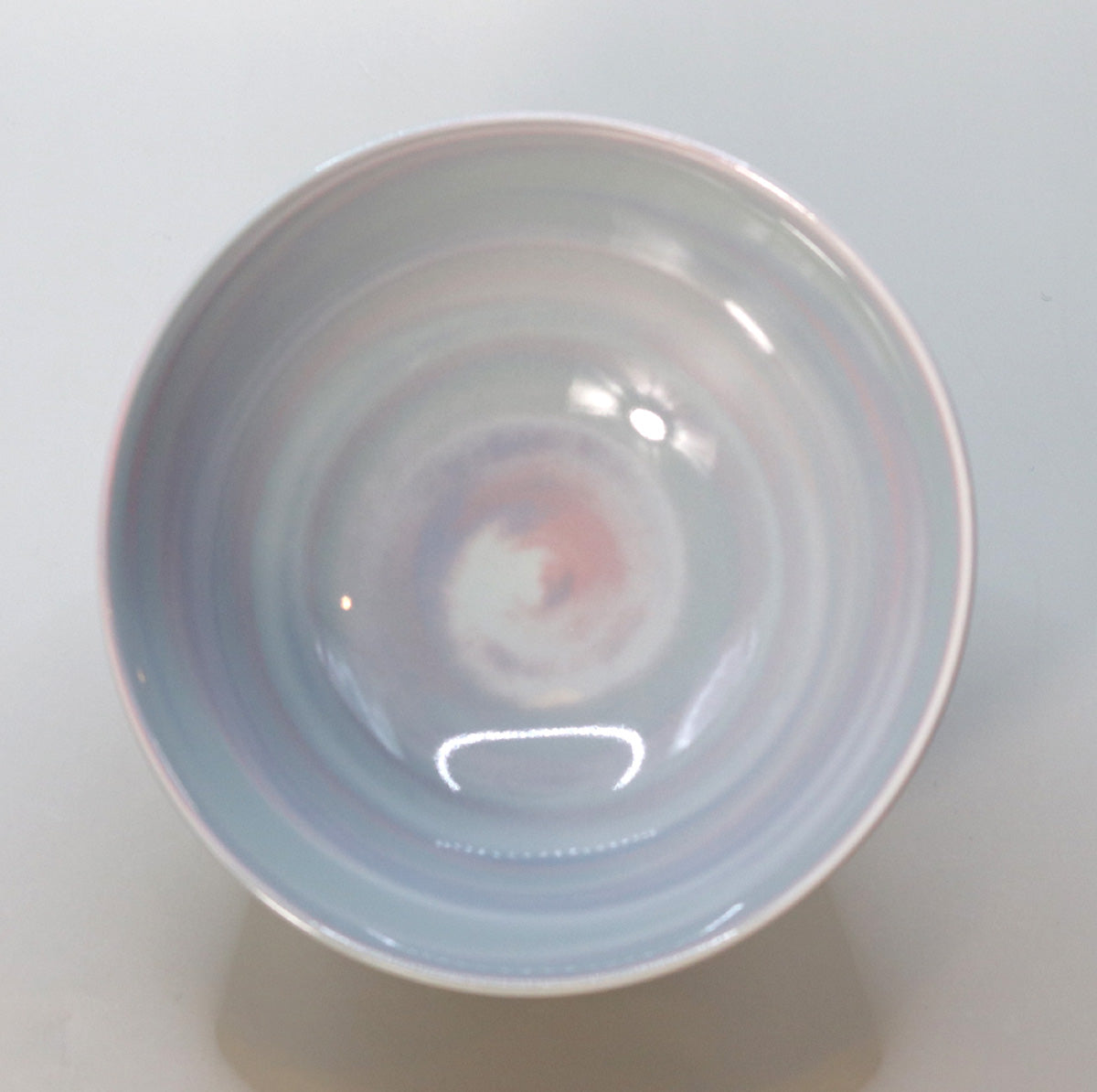
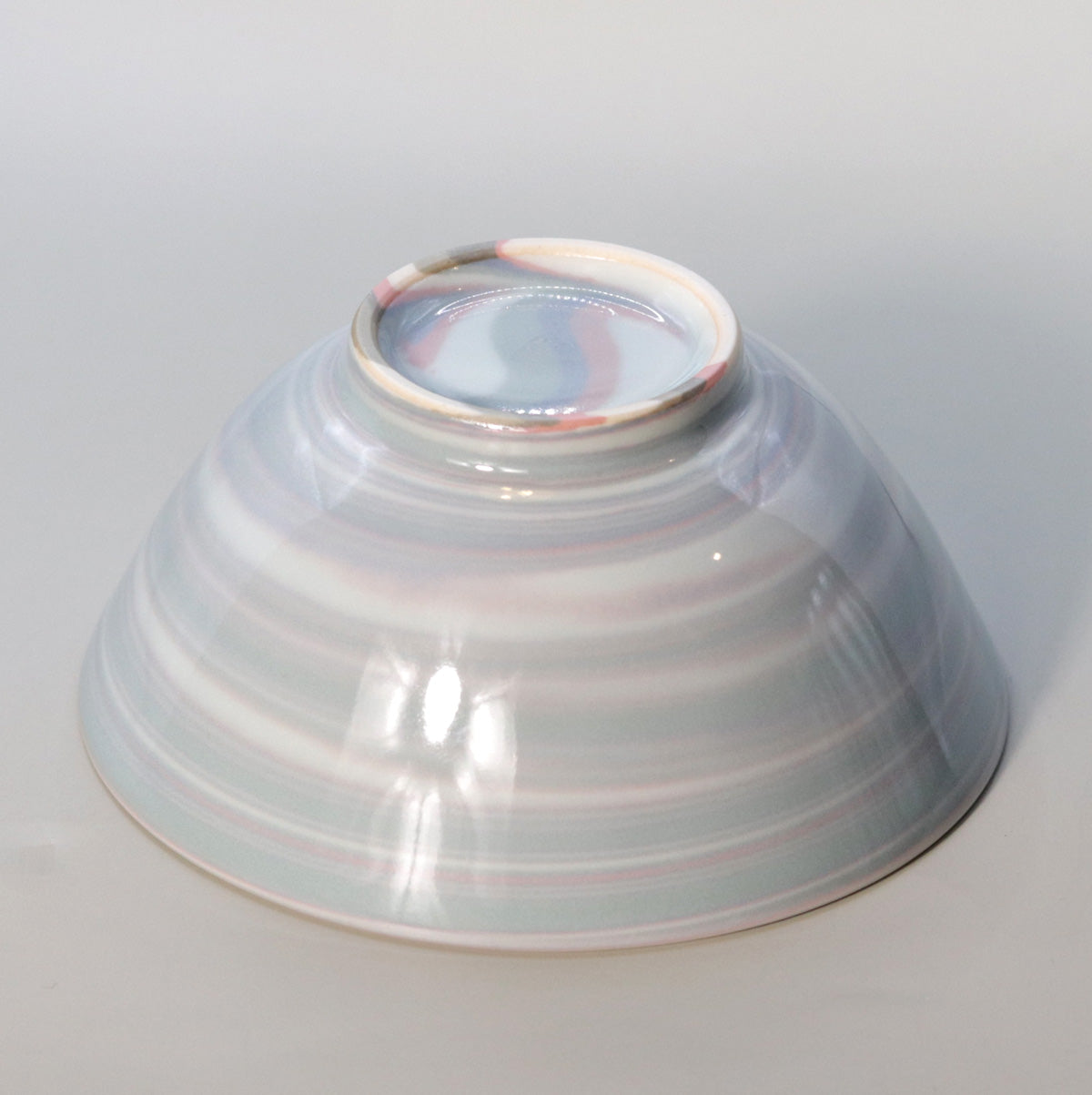
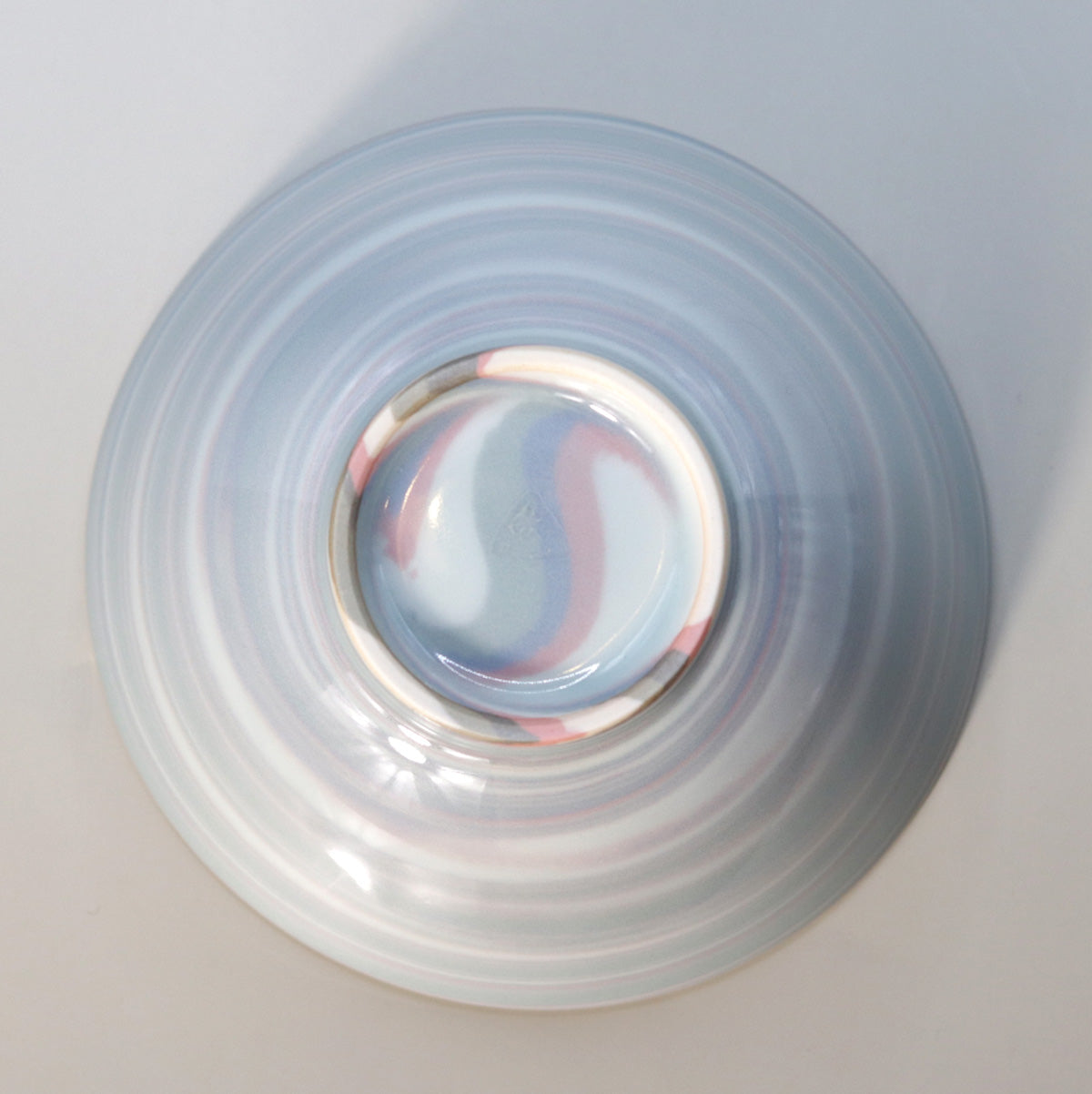
Multi-Column
-
[I will send it to you quickly and carefully]
We carefully package each product in a way that suits it best.
Also, delivery times vary depending on the piece (vessel, etc.).
Items that already come with a box will be shipped within 1-3 days of the order date.
For items that require a box to be made after your order, it will take approximately 30 days for production to be completed and then shipped.
In either case, once we have confirmed your order, we will contact you by email to inform you of the delivery date.
-
[Requests when purchasing pottery]
Even products that look the same may differ slightly in color, shape, size, etc.
The way the glaze is used, the power of the kiln, the firing method, the season, and the humidity also affect the appearance of the pottery.
Please understand the individuality of each piece of pottery and enjoy the unique warmth of handmade.

